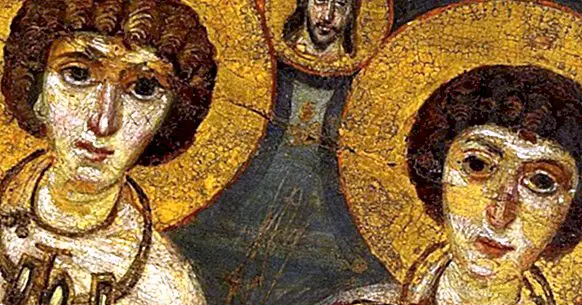Adelfopoiesis: the medieval union between people of the same sex
On June 3, 2005 was the day that marriage between same sex people in Spain was legalized, after modifying the Civil Code through Law 13/2005 of July 1. Although laws existed previously in some autonomous communities that allowed the de facto union, it would be from this day that gay and lesbian couples could get legally recognized marriage , this being a historical milestone in our country.
However, despite the persecution suffered by the homosexual population throughout history, it is not the first type of union between people of the same sex that has existed.
Since ancient times, different types of unions have been known between two men or two women (the former being more usual), such as in China or Ancient Rome. And even during times when homosexuality was badly considered and more persecuted, as in the Middle Ages, we can find this type of links. It is the adelphopoiesis, or adelphopoiesis . In this article we will talk about this curious ritual.
- Related article: "Polygamy: what is this type of marriage?"
The adelfopoiesis
Adephopoiesis refers to a type of union recognized and practiced by the Church in which joined both religiously and legally to two people of the same sex . Generally they were two men, although there are also cases of women who practiced this type of union.
This union compromised both parties to care for each other, share goods, jobs and tasks and even family (in such a way that even before the death of one the other remained linked to the family of their partner). As in a conventional wedding, fidelity and an eternal union were promised until death . Adephopoiesis allowed us to share goods, live together, link families, inherit property and even the possibility of being buried together.
Technically, the original purpose of the adelfopoiesis was not to seal a union of a romantic type but rather to refer to a kind of adoption or legal twinning (in fact, it is known in Latin as fraternitas iurata or ordo ad fratres faciendum) . It is the case very deep friendships, some relations of teacher and apprentice or companions in arms (a love rather amical and not romantic). Likewise, the existence of carnal consummation was not contemplated , something that did validate the marriages of the time.
But there is no doubt that the truth is that in practice he got couples of people of the same sex who love each other in a romantic and erotic way to have a legal union.
- Maybe you're interested: "The 7 myths of romantic love"
Made over time
This ritual was maintained during the Middle Ages until practically the Modern Age , even though it was not practiced frequently. Although it was not very common and seems to have been practiced more in eastern territories, the truth is that it was an officiated ritual, recognized and validated by the Church and there are even saints who practiced it, being an example of this the saints Cosme and Damian.
It is not known exactly why this ritual was stopped, although a possible explanation could be attributed to a reaction contrary to the union between people who felt romantic and sexual attraction towards people of the same sex.
The ritual
The act and celebration in question that took place were similar to those included in a wedding. The contracting parties met with their families in the church , and the ritual proceeded as follows:
Both parties were placed in front of the altar facing the cross, putting the oldest of both to the left. After this, the priest (although in some cases it was not necessary, being only essential to inform the community) pronounced various liturgies related to tolerance, love and respect, after which and in front of the lectern prayed that their union would be loving.
After that, both parties they were engaged in front of the altar, tying both together with a belt (both inside the same). The vows were pronounced, they received the communion of the same cup and the ceremony was concluded with kisses between both parties. Subsequently, the event was announced in society.
Fraternal or romantic interest?
The adelfopoiesis has been seen as a precursor of marriage between same-sex couples , what being a ritual recognized by the ecclesiastical establishment has generated the confrontation between different positions on the matter.In fact, authors like Boswell defend that homosexuality was accepted by the Church in Europe until the thirteenth century, interpreting this ritual as an example of it.
Other critical voices are against this consideration, strictly adjusting to the sense that the ecclesiastical institution gave at that time to this type of unions as an oath of loyalty and brotherhood without any type of romantic or sexual connotation.
In any case, although the adelfopoiesis was not seen as an element in which erotic and romantic love took place , its appearance implies the possibility of carrying out a union of this type, being something that may lead one to think of a mental opening in this aspect that would later be lost over the centuries.
Bibliographic references:
- Boswell, J. (1996). The marriage of similarity: unions between people of the same sex in pre-modern Europe. Barcelona: Muchnik Publishers.
- Florenski, P. (1914). The column and the foundation of Truth. Orthodox theodicy trial in twelve letters.



















